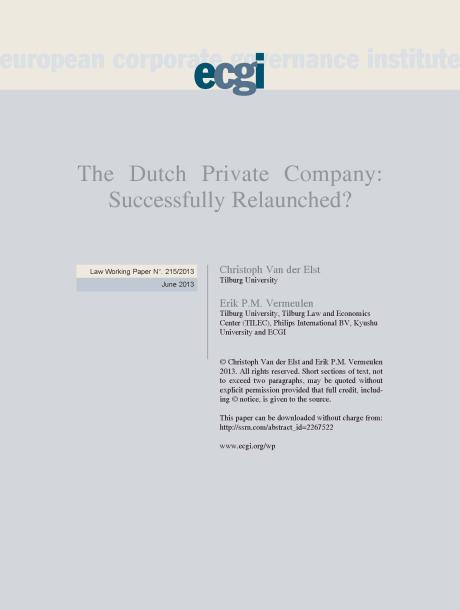
Law Series
The Dutch Private Company: Successfully Relaunched?
Abstract
This Chapter in a comparative book on private limited liability companies starts with an illustration of the former success of the Dutch limited liability company (BV). Next it addresses the competitive European legal environment within which the Dutch BV has to operate. The study shows how the Dutch legal environment lost a large part of its competitiveness. Third, we sketch the flexibility of the new Dutch system and investigate whether the legal reform can meet the needs and requirements of modern business in the 21st century. We do not identify a successful restart and provide a number of suggestions to turn the tide.







